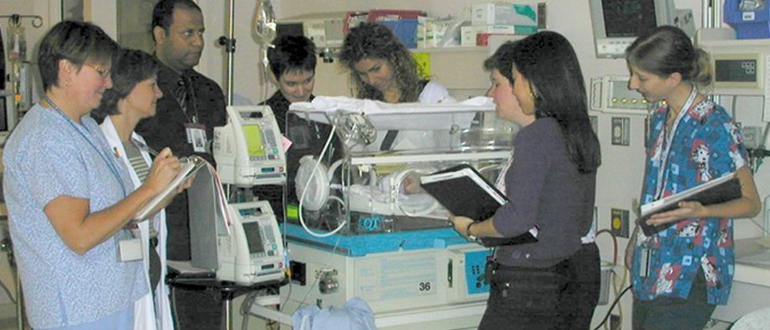toh
Preterm Birth

Preterm birth before 37 weeks’ gestation is a pervasive problem affecting both singleton and multiple births. Whereas the preterm birth rate in Canada across all pregnancies is approximately 8 %, only 6.2 % of singletons are born prematurely. 57 % of twins and about 95 % of triplets deliver early.
About one third of preterm births in multiple pregnancies are medically indicated, meaning that either the mother’s medical condition or the compromised fetal health or intrauterine environment makes early delivery medically necessary. Multiples are at increased risk of several maternal conditions such as high blood pressure and diabetes. Fetal conditions in multiples which often require early delivery include intrauterine growth restriction in one or both babies, structural differences in the babies or special twin conditions. Multiple pregnancies are screened frequently for these conditions.
The other two thirds of early births in multiples occur spontaneously. Although the average gestational age for all births in Canada is 39 weeks, this falls to 35 weeks for twins and 31 weeks for higher order multiples (Vanier Institute of the Family, 2017 Update). Your doctor will discuss with you the warning signs of preterm labour and look for signs that labour may start early (for example, by assessing your cervical length on ultrasound).
The reasons spontaneous preterm delivery of multiple births is more frequent than in singletons is unknown and depends on many factors, such as over stretching of the uterus, hormones secreted from the larger placental mass or signals from the babies themselves. After 18 weeks your doctor may order an ultrasound measurement of cervical length to help predict your risk of preterm birth before 34 weeks.
Prevention of preterm birth in multiples is a complex problem and many of the interventions applied have not been as effective in multiples as they are in singletons. Your doctor will discuss these strategies with you to determine what is the right approach for you.
Last updated on: April 29th, 2021


 To reset, hold the Ctrl key, then press 0.
To reset, hold the Ctrl key, then press 0.